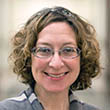The Fed’s Three Parts: Washington, Wall Street, Main Street
The Federal Reserve System—or Fed, for short—was structured so that monetary policymakers hear from many different voices around the country. The Fed was designed with three distinct but complementary components:
- The Board of Governors in Washington, D.C.
- A Reserve bank in New York City, long considered to be the nation’s financial capital.
- 11 additional Reserve banks located throughout the United States.
The Federal Reserve Bank of St. Louis is among these regional Reserve banks, which are designed to represent the voice of Main Street.
A Policymaker’s Reflections
In this video, St. Louis Fed President James Bullard recounts how last decade’s financial crisis demonstrated the importance of the Fed's decentralized structure. These and other reflections on his first 10 years as president and CEO became the foundation for the St. Louis Fed’s 2017 annual report.
"I think it is incumbent on the Main Street component of the Fed to push back against its Washington and Wall Street counterparts, to represent Main Street America the way it was intended in the original Federal Reserve Act," Bullard said in the report. "I felt that the crisis actually brought out the role of the regional Federal Reserve banks pretty extensively."
Additional Resources
This blog explains everyday economics and the Fed, while also spotlighting St. Louis Fed people and programs. Views expressed are not necessarily those of the St. Louis Fed or Federal Reserve System.
Email Us


